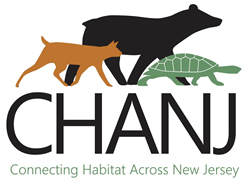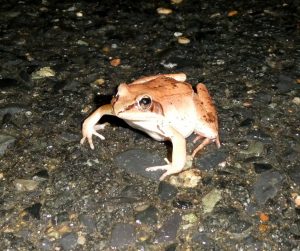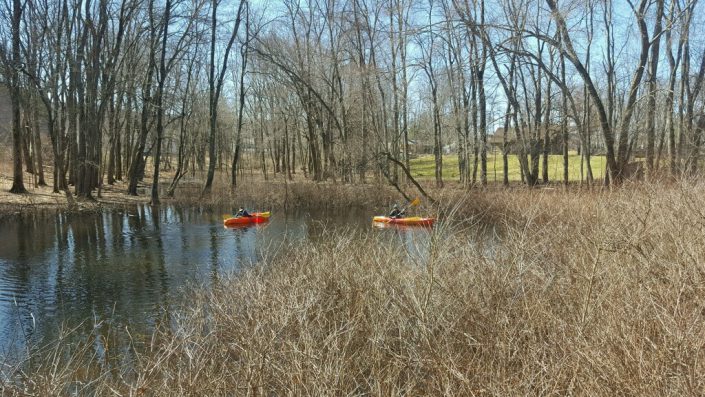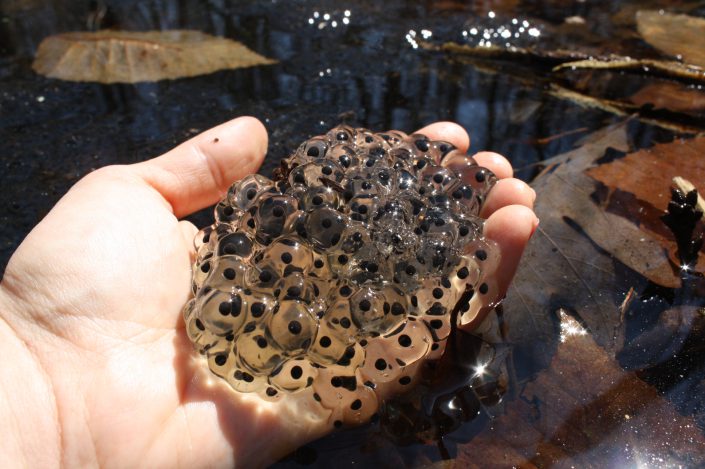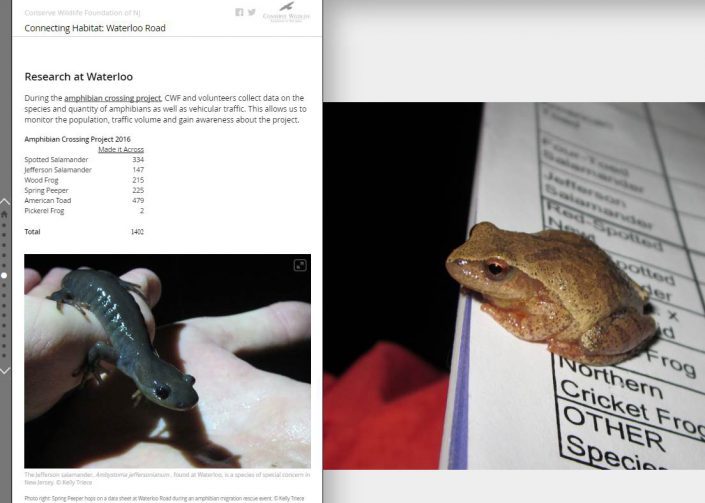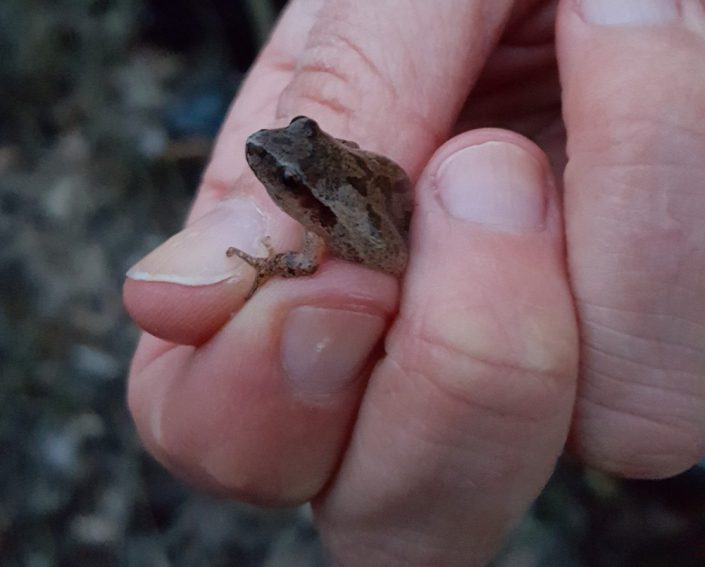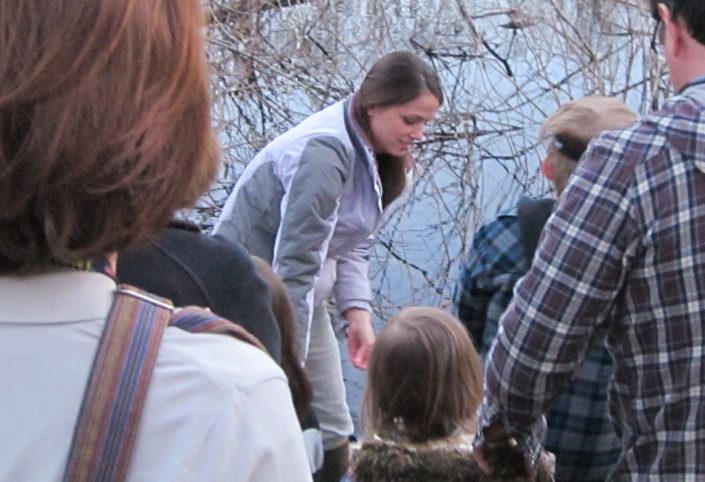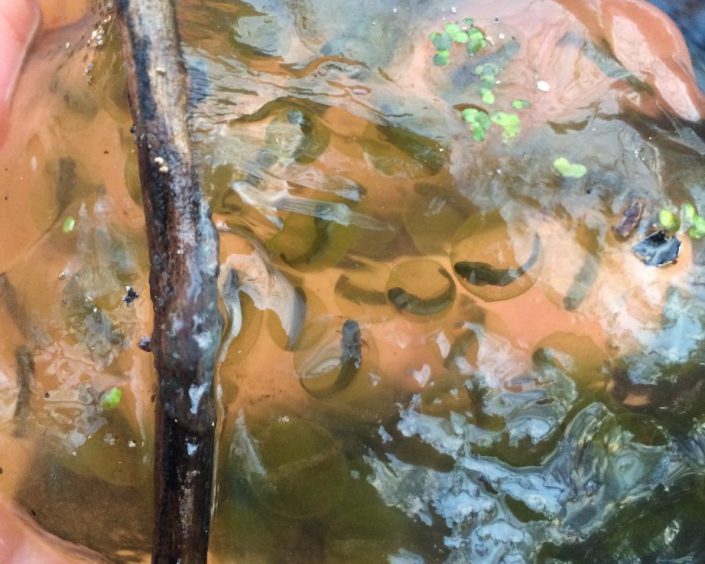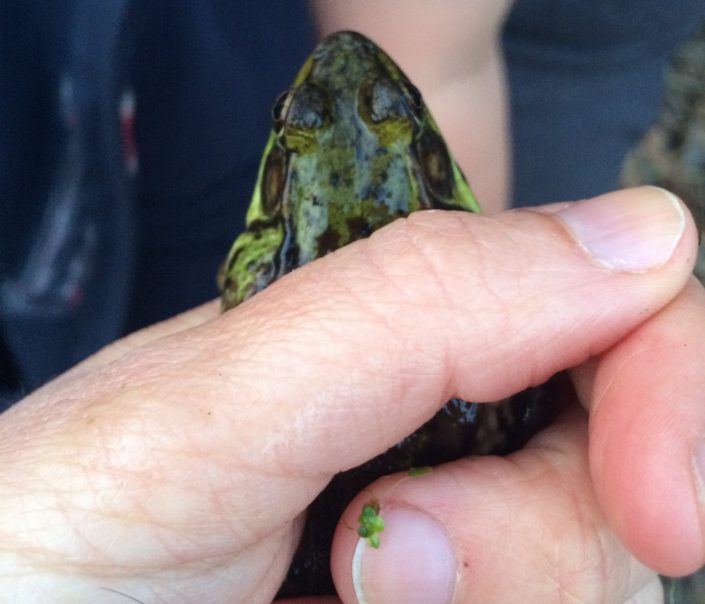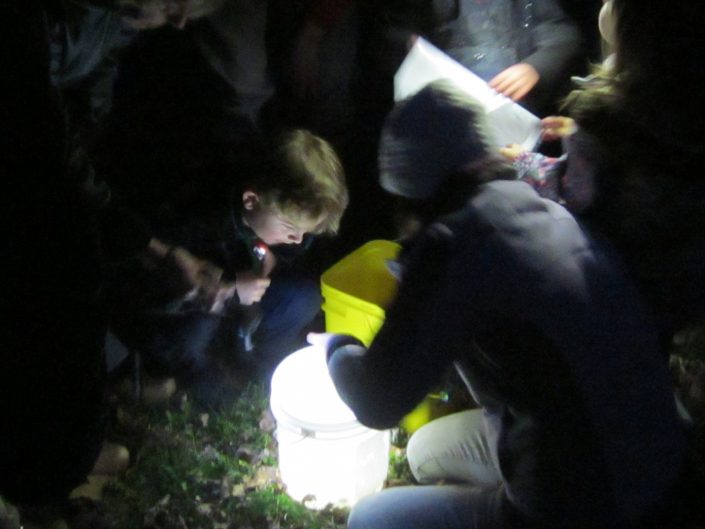Animal, Vegetable, (Mineral doesn’t apply)…
This post is the second in our “super salamander (and frog)” series in which we’re exploring some of the unique adaptations exhibited by local amphibians that would seem more appropriate within the confines of a comic book than out and about in our Garden State landscape. Today’s focal species is the spotted salamander (Ambystoma maculatum), our benevolent Poison Ivy. Full disclosure, this topic has nothing to do with plant, though salamanders themselves are not sensitive to the compounds that make humans itchy and have been known to use “leaves of three” as sources of shelter.
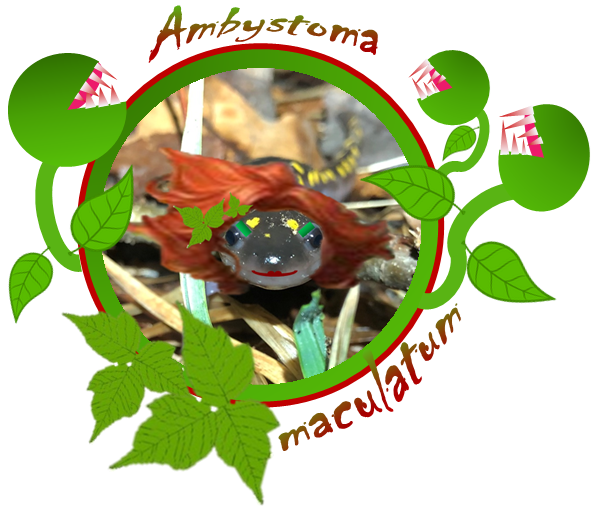
For those of you who may be unfamiliar with the DC Comic Universe, Poison Ivy is a villain who often opposes Batman (and occasionally Superman) during her crusade to protect plants and rid the world of environmental destruction. Though her goals may seem in line with ours here at CWF, her methodology differs dramatically and she is often defined as an eco-terrorist. A former botanist, Poison Ivy, AKA Pamela Isley, was poisoned by her professor. Though she survived the experience, the toxins drove her insane and transformed her into a human-plant hybrid. And that is where our connection lies…
If you’ve ever seen an egg mass deposited by a spotted salamander, you may have noticed that the casing often appears green. This is caused by an association with a very particular kind of green algae called Oophilia amblystomatis. The connection between salamanders and algae has been recognized for > 130 years. For most of that time, it was thought that the algae just occurred within the egg. This is a sensible mutualism- it is auspicious to both species involved. Spotted salamander eggs develop in vernal pools. These temporary wetlands may have relatively low concentrations of dissolved oxygen, so the introduction of algae, which can create oxygen through photosynthesis, into eggs can certainly benefit growing larvae. Under experimental conditions where salamander eggs containing algae were cut off from sunlight, growth and development was delayed and resulting individuals were smaller than those exposed to natural circumstances. On the other side, larvae produce CO2 and nitrogenous wastes, which can be used to the advantage of the algae. Studies have shown that Oophilia are most successful in water that has been exposed to spotted salamander eggs, even if they are not within the eggs themselves. Case closed, right?

Wrong. In 2011, a team of researchers at Dalhousie University in Halifax, Nova Scotia, discovered that the relationship between these two organisms is, literally, skin deep… The algae don’t just infiltrate the salamander’s egg masses. They are also found within the salamander’s tissue cells. This type of connection is called an endosymbiosis- one cell living inside another cell. Coral reefs and their associated algae are the poster children for this phenomenon, but it is not uncommon among invertebrates. Vertebrates, however, tend to have much more active immune systems that are programed to recognize a cell growing within another cell as a health threat. We can be grateful for that, as dangerous pathogens (e.g., malaria), can spread this way. In the case of salamanders and algae, the above-mentioned team discovered that the amphibians were actively suppressing their immune systems to allow for the success of the algae, which indicates that they must continue to benefit from this association. The algae show signs of stress when encapsulated within the body of salamanders; sunlight becomes harder to access, so rather than creating energy through photosynthesis, they switch to the process of fermentation.
The endosymbiotic mutualism between spotted salamanders and green algae is totally unique among vertebrates. No other amphibians, reptiles, mammals, birds, or bony fish are known to support a similar relationship. Research on the mechanisms and the meanings of this “partnership” are ongoing, but scientists are hopeful that the discovery could yield novel techniques for medical advancement.
While spotted salamanders are certainly not hybridizing with their algal associates, in a way, they walk the animal-plant boundary as they incorporate both types of cells within one compact package, therefore making them the amphibious analogs of DC’s Poison Ivy.
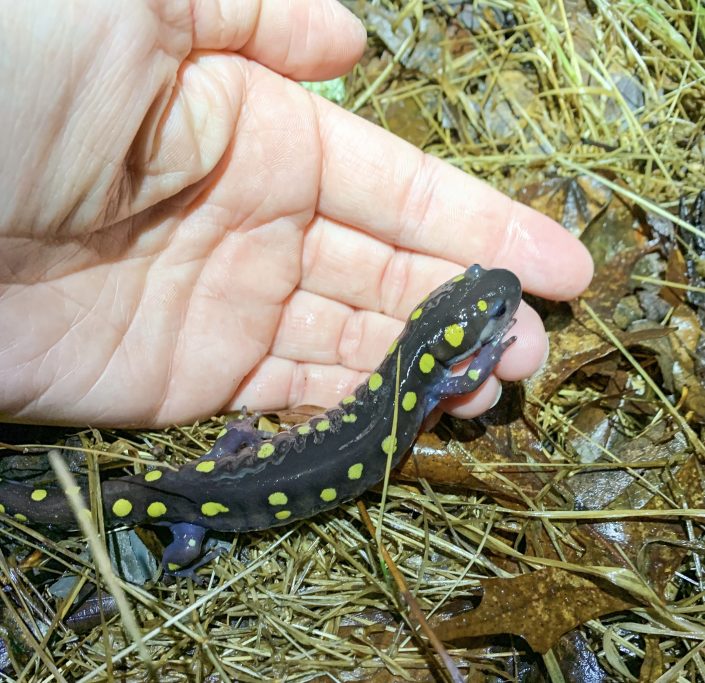
Our final installment will shift the focus to frogs and, in particular, one that doesn’t mind the late winter chill…


